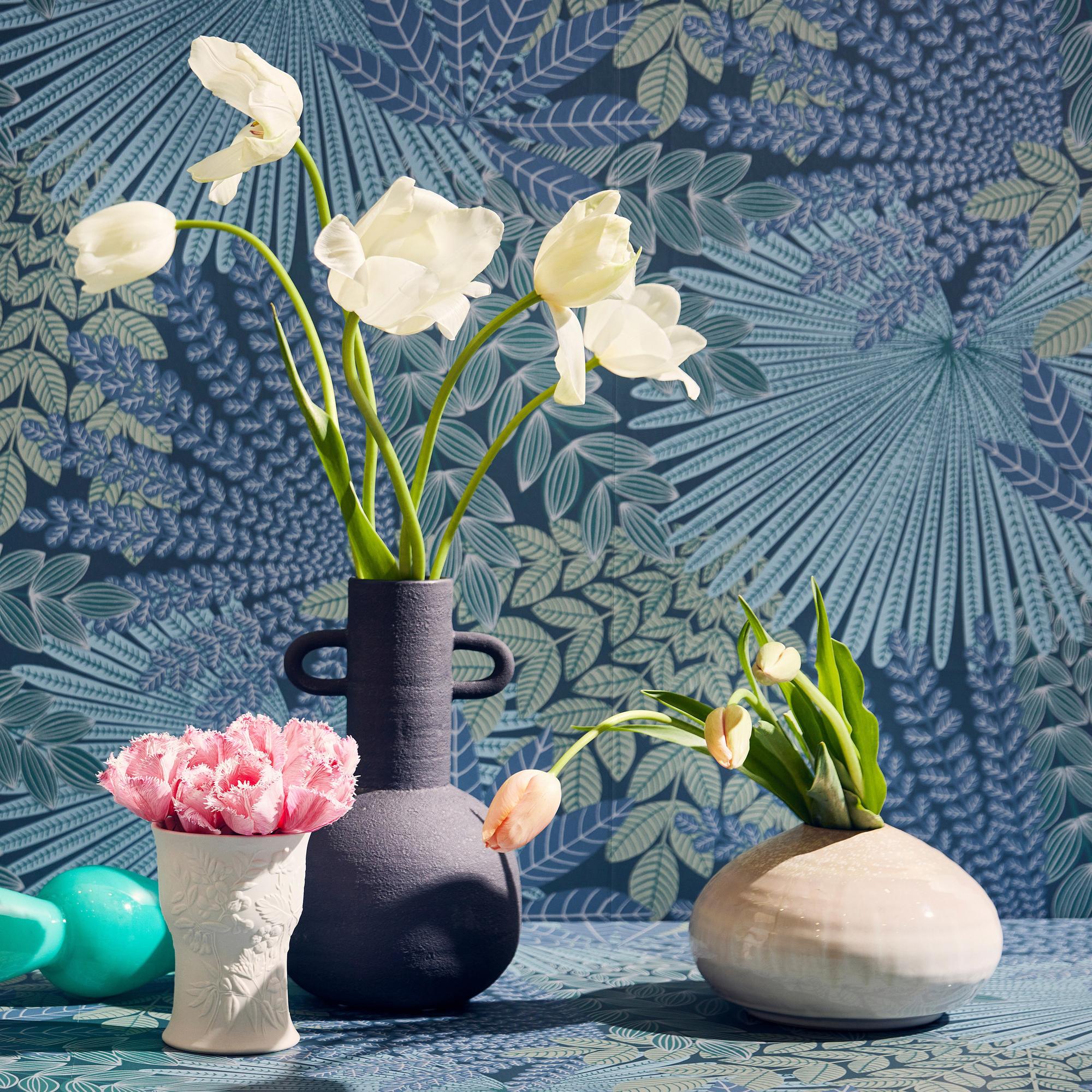
Just one or a full bouquet: creative ways to arrange tulips in any vase
A vase of tulips brings a vibrant sense of spring into your home. Use various vases boldly, either grouped together or on their own. No need for extravagance—the flowers will do the work. A handy tool is a flower frog.
Sculptural designs
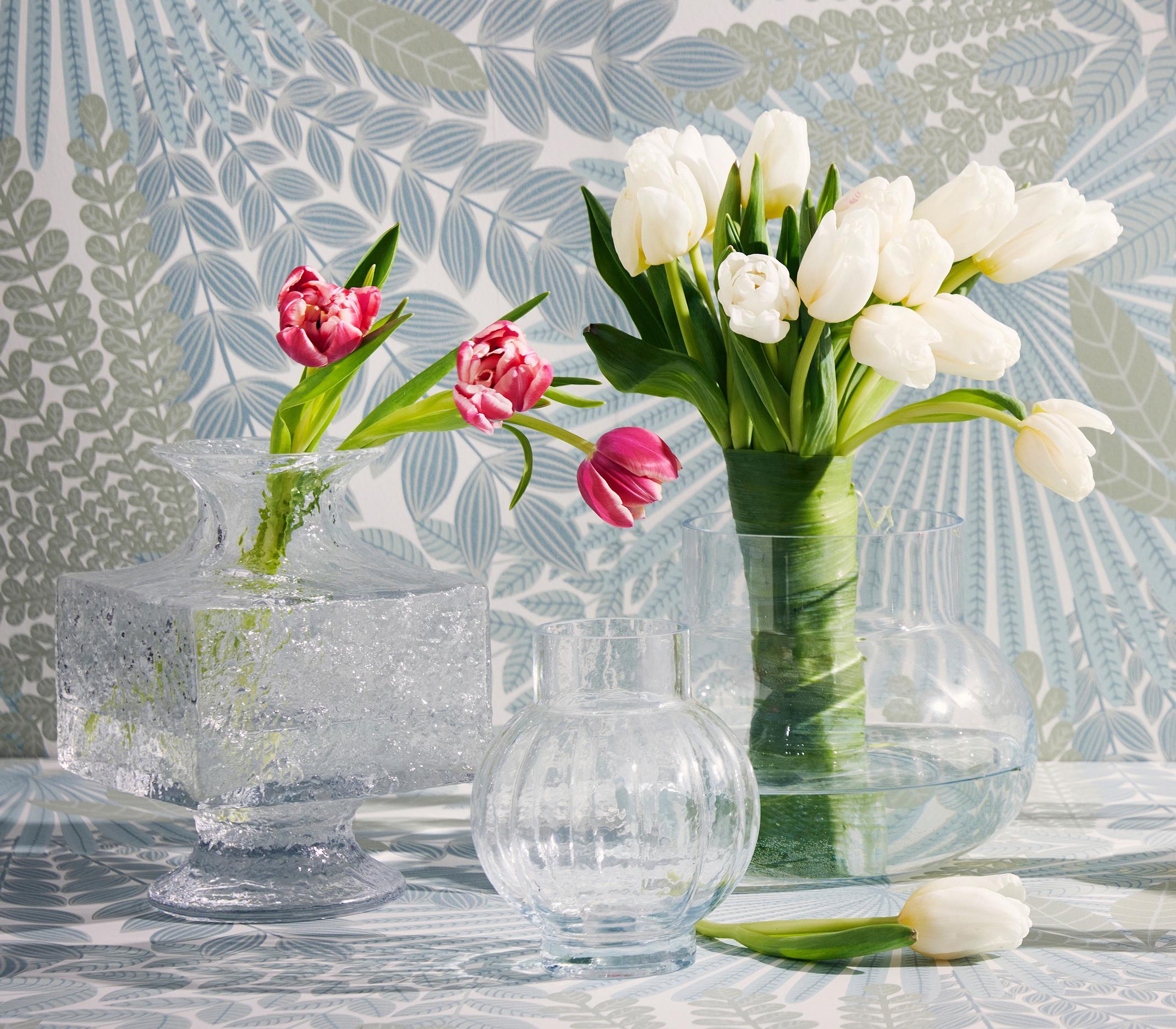
On the left, the Crassus vase by Timo Sarpaneva from the 1960s–70s, with its sculptural quality, is perfect for a few impressive tulips. The petals of the tulips in the vase are beautifully multicolored, highlighting the layered blooms.
The sculptural bouquet on the right is created by carefully removing the largest leaves from the tulip stems. Arrange the flowers densely in a large kenzan, or flower frog, so that it is filled all the way to the edges. Tidy up the leaves you removed and wrap them around the stems to hide the frog. Secure the leaves with pins or with wire bent in a U-shape. The spherical shape of the vase provides a fun contrast to the bouquet’s slender lower section.
Alone and together
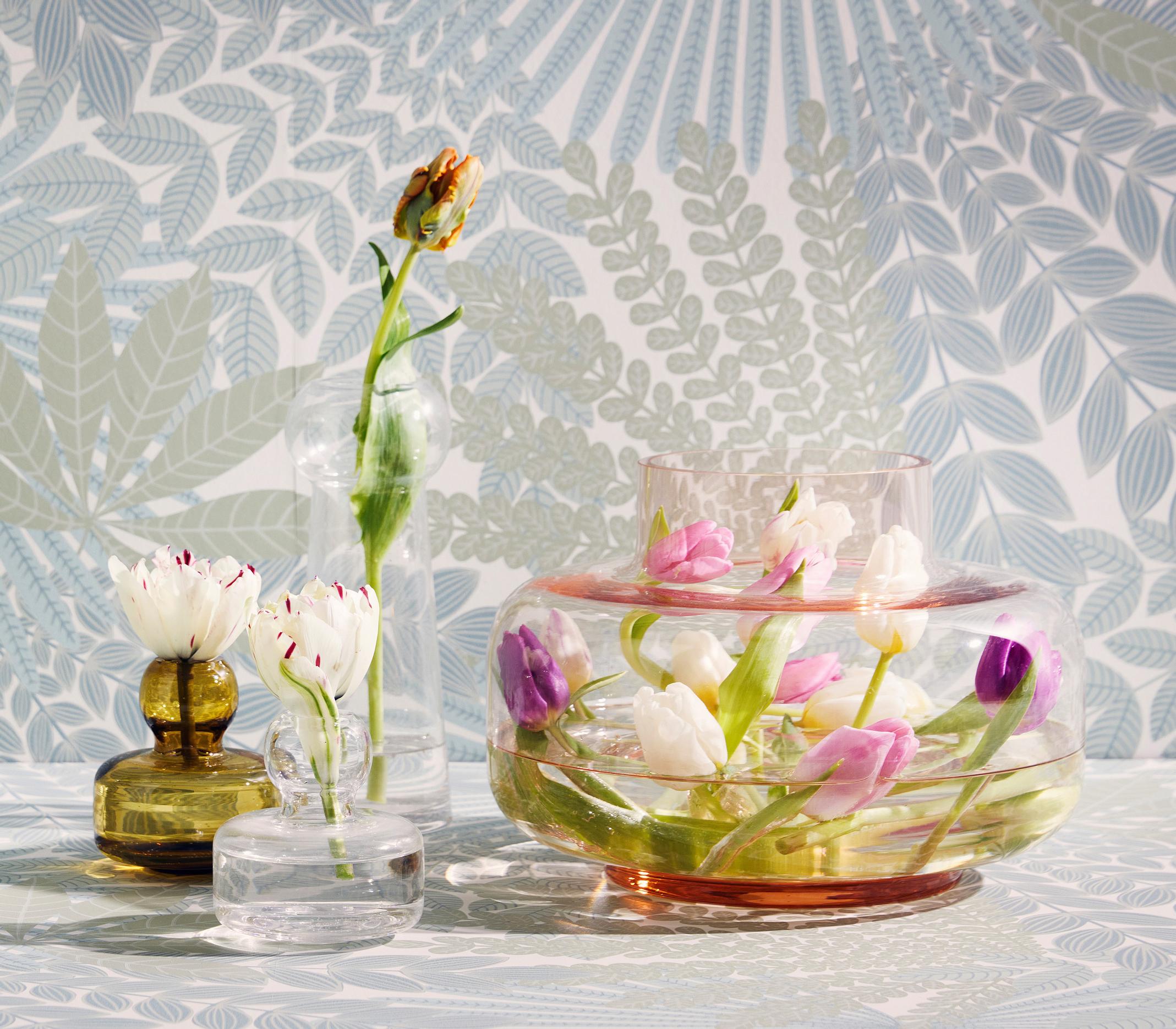
On the left: In a vase for a single flower, choose a unique bloom that captures attention. You can use small vases to effortlessly bring vibrancy to unexpected places, such as the hallway or bathroom. The striking parrot tulip is magnificent on its own, and it’s delightful to watch the flower evolve from bud to full splendor.
On the right: Remove some of their leaves and freely arrange tulips of varying lengths intertwined in a vase. If the vase is colored, choose tulips in shades that complement each other. This keeps the whole arrangement harmonious, showcasing both the flowers and the vase beautifully. Arrange differently colored flowers in a transparent vase. This allows them to shine in their stunning hues without competition.
Blooms in all shapes
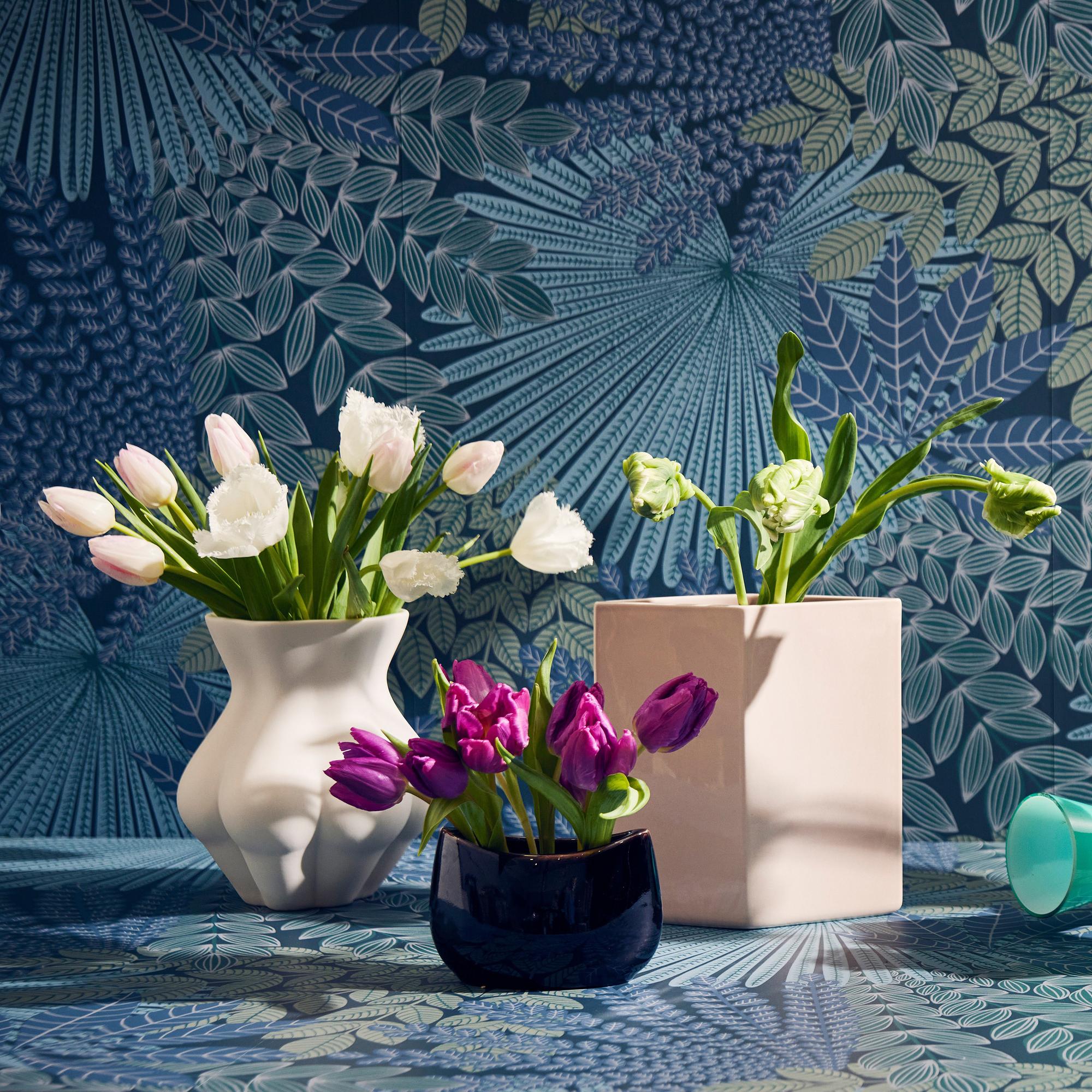
Combining delicately colored and fringed tulips doubles the romance. In an hourglass-shaped vase with a mouth that flares outward, such as here on the left, a lush bouquet can open up, allowing the flowers to display their full beauty.
Arrange vibrantly colored tulips in a line in a boat-shaped vase (in the foreground of the photo) with the help of flower frogs. Use at least two or three frogs. Shorten the stems when you change the water, or let the tulips grow and watch the arrangement evolve. The vase, designed by Richard Lindh, is from the 1960s.
The striking parrot tulips shine in a minimalistic vase. By choosing a slightly taller vase, you can let the tulips grow significantly in length. The proportions between the vase and the flowers only improve as the tulips grow.
Long and short
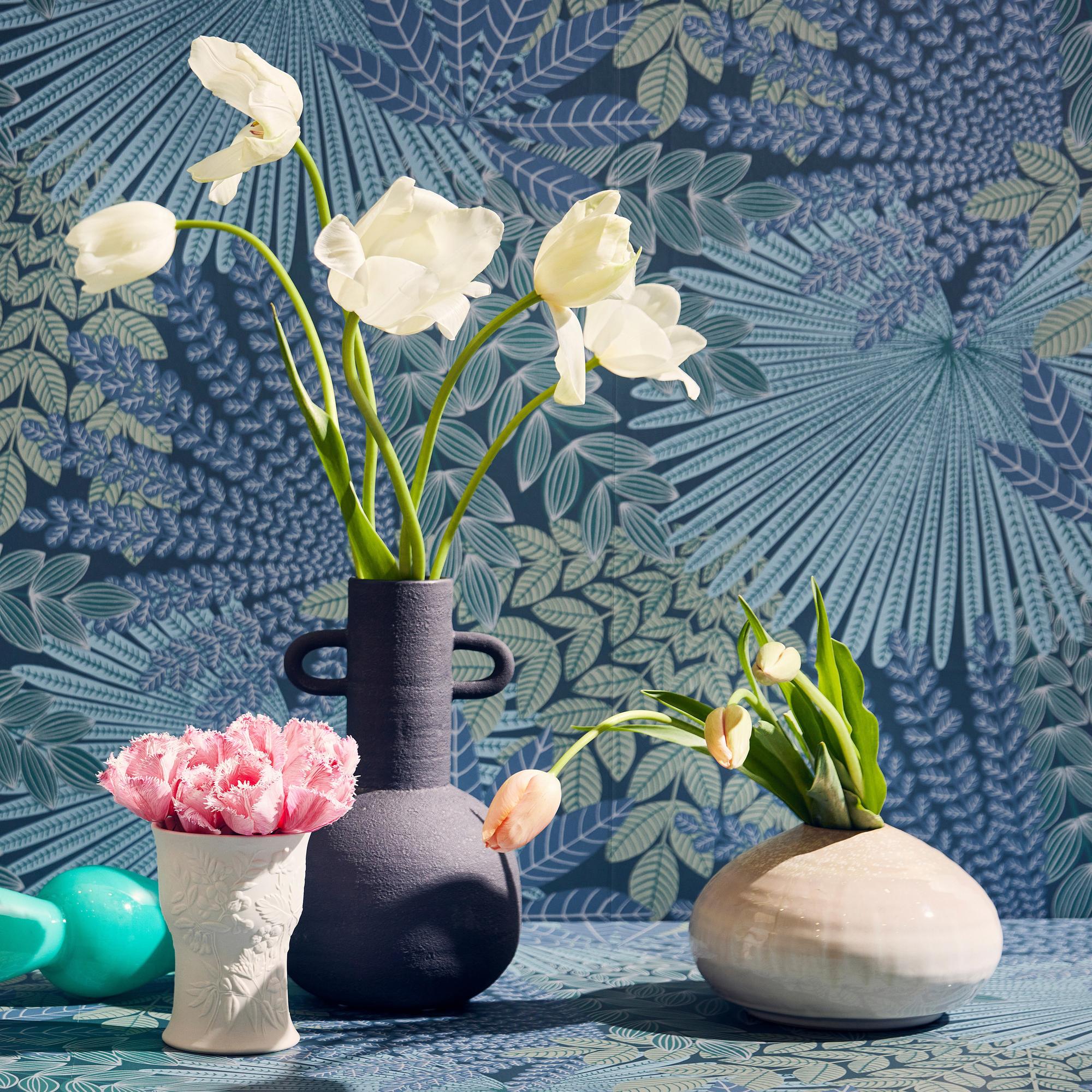
On the left: Cut the stems of dyed fringed tulips so the blooms just reach the rim of the vase. A cylindrical vase best highlights such a bouquet. The Suvi vase by Arabia was produced from 1978 to 1989.
Magnificent French tulips reach for the sky from the long-necked vase (center). The beauty lies in their gracefully curving stems, and it is worth emphasizing.
Apricot-orange French tulips are well-suited to a softly colored ceramic vase with a broad shape but a relatively small opening.


